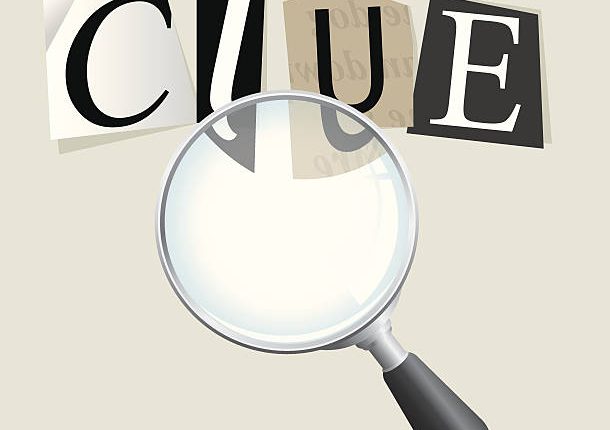Any object that contains handwritten, typewritten or printed markings whose source or authenticity is in doubt, is referred to as “questioned document’. Such a broad definition covers all the written and printed materials that are normally encountered in our daily social and business activities. Letters, cheques, money receipts, money order forms, account books, bills, driving licences, contracts, wills, sale deeds, passports, lottery tickets are more common documents encountered as evidence. 3. Care, Handling and Preservation of Documents.
The value of document diminishes with careless handling. It is thus essential to handle and save the document carefully. The following instructions should be followed in despatching documents the expert for examination:-
(1) Do not handle the document with bare hands, as it would get soiled, and contents destroyed
(2) Retain the document in a transparent envelope. This will facilitate viewing the document without handling.
(3) Don’t fold the document along new lines.
(4) Don’t carry the document in the pocket, as the body heat or moisture may negatively affect them.
(5) Don’t treat the document with any chemical for any purpose whatsoever. Indeed, if the expert requires this original document should be preserved.
(6) If portions of the documents are to be examined, they should be encircled with coloured pen.
(7) The document shouldn’t be exposed to strong light, heat or humidity.
(8) Determine initially if fingerprint processing is required.
(9) Do not trace on the document.
(10) Do not pin, cut, label or tear the document.
(11) Place identification mark on the document at an inconspicuous place so that questioned writing is not disturbed.
(12) The documents are transferred to the expert through special messenger. In important cases, the Investigating Officer himself should take the document to the examiner. If they are sent through post, they should be ensured against loss or theft, if they’re transferred through the post.
(13) The forwarding letter should contain the list of all documents dispatched along with their identifying marks.
Nature of Problems
Questioned document problems are varied in nature. The important ones relate to:-
(1) Identification of handwriting.
(2) Identification of signatures and detection of forgery.
(3) Examination of writing materials like pen, paper, ink, etc.
(4) Evaluation of erasers, alterations, additions and obliterations.
(5) Decipherment of indented and charred documents.
(6) To determine order and age of writing.
(7) Evaluation of typescript.
(8) Evaluation of handwriting.
Identification of Handwriting
Identification of handwriting is the most important branch of questioned documents. It may be necessary to identify the signature of Ce text in a document to ascertain, whether it is in the hand of a suspect or the victim; whether the signatures are traced or disguised.
Principles of Handwriting Identification
Handwriting is an acquired art like painting, dancing or cycling. The early stages that accompany the learning and practising of writing are characterised by a conscious effort on the part of a student to copy standard letter forms. He takes a mental impression of the model before him and makes an effort to translate it through the muscles of his hand, as writing. After practice proficiency is acquired and the writing gets set and mature. It is an almost a reflex action.
A correct picture of the model is not reproduced by the mind nor reproduced through the muscles. There are diversions in both these aspects. These mental and muscular deviations result in a nerve-muscle response pattern and give the writing its individuality.
The handwriting that is characteristic of an individual is the product of a number of influencing factors, each of which contributes to the final form, style, and characteristics of the writing. These are determined basically by-
(1) The system of writing originally learnt.
(2) The experience and use of the hand over a period of time.
(3) The presence or absence of physical abnormalities or defects developed from illness, injury, psychological variations.
Individual Characteristics
It is a well-established fact that the unconscious handwriting of two different individuals can never be duplicated. Individual variations associated with physical and internal mental health state of the writer make it extremely doubt fully that any two individuals can exactly reproduce the writing characteristics.
Therefore, variations are expected in angularity, pitch, speed, pressure, letter and word spacing, relative dimensions of letters, connections, pen movement, writing skill, line quality etc. Besides, particular habits like margins, distance between words, crowding, insertions, alignment, spelling, and grammar knowledge can together help individualise the writer.
In a problem involving the authorship of handwriting, all characteristics referred above of both the known and questioned documents are examined and compared. No one single handwriting characteristic can by itself be taken as basis for a positive comparison. The final conclusion of identity or non-identity has to be based on a sufficient number of common characteristics between the known and questioned writing Sometimes, it may be difficult for the expert to arrive at a positive conclusion, when a known writing made available for comparison has insufficient number of characteristics.
Difficulties may also arise when the expert is presented with questioned writings containing only a few words, or text deliberately written in a crude unnatural form, or very carefully written to disguise the writer’s natural style. Although it may be relatively easy to change one’s writing habits for a few words or sentences, the task of disguising becomes more and more difficult with lengthy text or writing
Factors Affecting the Writing: Handwriting being an acquired art is affected by a number of internal and external factors. Some of these are:-
(a) Writing materials: Paper, pen, ink, pencil, writing support, seat etc. can contribute to variations in handwriting.
(b) Physical or psychological disturbances: Excitement, illness, fear, pain, injury to the hands, influence of drugs or alcohol can adversely affect the writing characteristics.
(c) Age: As time advances some of the old characteristics are modified or dropped and a few new characteristics are acquired. Old age may set in deterioration in strokes and poor form of letters.
(d) Natural variations: No two specimens of writing prepared by one person are identical in every detail. Variation is an inherent part of natural writing. If a person writes the same word or signature a number of times, the reproductions in minutest detail are never alike. These deviations within certain limits, in form, size, proportion, slant, etc, of characters and in the combination of characters are called natural variations.
For more updates, subscribe to our blog.







